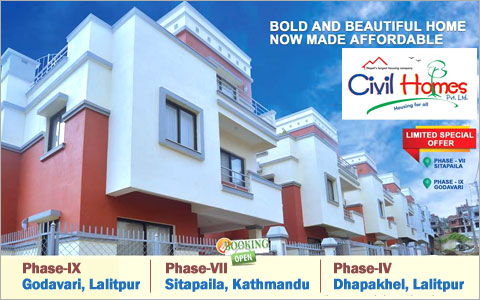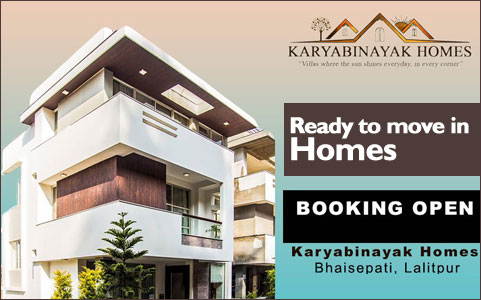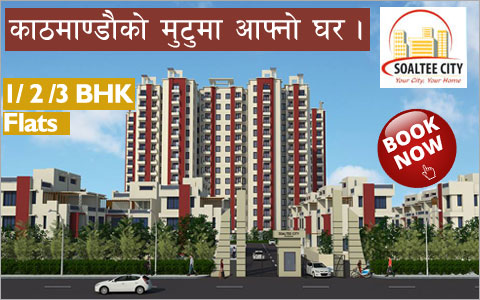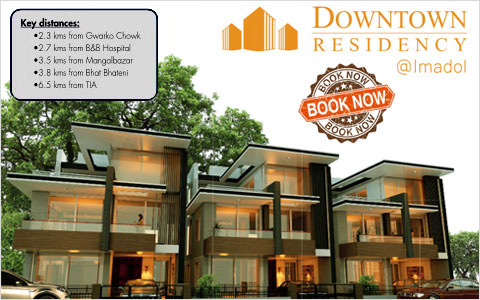National News

Kathmandu: In the aftermath of Sunday’s 6.8 earthquake, metropolis residents, who have witnessed an increasing number of high-rise apartments and large commercial complexes lately, seems to have woken up to ringing alarm bells.
Despite an unprecedented building boom in the latest times, the safety aspect has still remained as a questionable matter. Officials of Department of Urban Development and Building Construction (DUDBC) say failure to make construction guidelines stricter is dampening the process of building a safe city.
“We give the go-ahead to construct buildings only after we were assured of structural and other fundamental compatibilities. But the sad part is we are authorised to oversee the apartments after the start of construction following a municipality approval,” says DUDBC Spokesman Shivahari Sharma.
Loopholes in laws and negligence from the government in revising the faulty regulations is leading to construction of buildings out of blue while giving two hoots about safety. Although the law requires permission from DUDBC for building construction, the legal loophole has made the matter worse, say officials.
More worrisome is the fact that most of our shopping complexes, hospitals, cinema halls and schools are housed in the buildings that were originally built as private residences. “Many people first construct a house for private purpose but later lease it for commercial activity, for which they are not designed. This is very hazardous,” adds Sharma.
More than 50 apartment and housing companies registered at DUDBC claim their apartments and housings are safer than the other public structures as they have to pass the department’s monitoring process. However, DUDBC has been facing searing criticism for not monitoring the construction of apartments once its approval for construction.
Min Man Shrestha, general secretary of Nepal Land and Housing Developers’ Association, said the safest structures in the Capital at the time of earthquakes are the apartments and housings. “We have invested billions in construction. We will be judged by the quality, so we never adopt those measures that backfire on us.” There might have been irregularity in some cases, but DUDBC and the association is always keeping a close eye, he said.
On the other hand, DUDBC and some developers are at loggerheads over whether or not the residential houses built by developers must be approved by the department before construction. Sharma said the department is trying to bring the housing companies within purview of law but some developers start construction sidelining the department reasoning that the single houses are not apartments. A case filed at the Supreme Court on this issue is still awaiting the final verdict.
Amrit Man Tuladhar, senior divisional engineer, said construction of houses in haste has added woes. “We have utterly failed to comply with the very basics of building safe houses,” he said. “For an instance, constructing large aluminium windows in a two-storey building will give a look good, but it will come at the cost of structural strength. We must ensure that our corners are window free which is one of the basics.” An additional investment and timely consultations from experts will protect physical structures during earthquakes to a large extent, he said.
source: The Kathmandu Post, 20 September 2011
- 9th Nepal Buildcon International Expo 2024
- Real Estate Expo 2023
- NRB raises housing loan limit to encourage home constructions
- Nepal Rastra Bank (NRB) Monetary Policy 2080-2081
- New Price of Land in Kathmandu Metropolitan City, Nepal
- Capital Gains Tax Rate on Real Estate Transactions in Nepal 2080-81 ( 2023/24 )
- Kathmandu metropolis implements free parking policy for commercial buildings and hospitals

![[X]](https://www.housingnepal.com/images/popup-close-button.png)



















































































































































































































































































































































































 Facebook
Facebook
 Delicious
Delicious
 Digg
Digg
 Reddit
Reddit
 Stumble Upon
Stumble Upon









